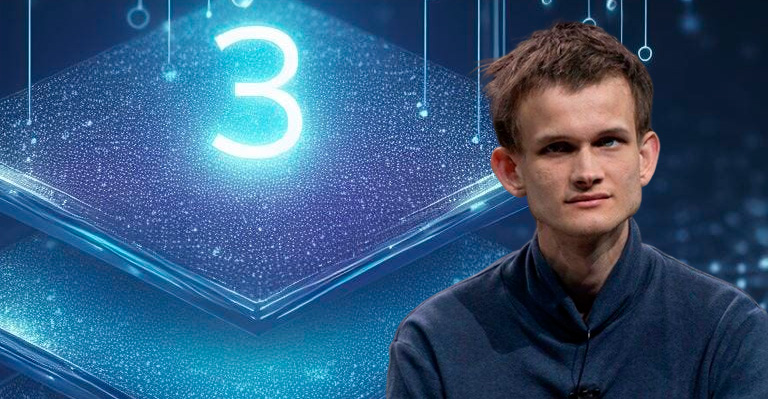TL;DR
- Vitalik Buterin’s Perspective: He acknowledges the cost-saving potential of Layer 3 (L3) networks but suggests there are simpler ways to achieve these savings without fully committing to L3 solutions.
- Ongoing Debate: The crypto community is divided on the value of L3 networks, with some like Polygon’s CEO arguing they detract from Ethereum, while others believe they contribute to its growth.
- The Future of Ethereum: Despite the current debate and development of L3 solutions, Buterin emphasizes the need for cost-effective and efficient innovation, cautioning against rigid definitions that could limit future advancements.
Vitalik Buterin, the co-creator of Ethereum, has voiced his perspective on the role of Layer 3 (L3) networks in the ecosystem. While acknowledging that L3s can mitigate certain fixed costs associated with batch publishing and deposits/withdrawals, Buterin suggests that more “lighter” methods exist to achieve cost savings.
Vitalik Buterin’s views on L2 and L3 networks are emerging during ongoing discussions within the cryptocurrency community about their roles and boundaries. He believes it’s premature to establish fixed definitions within the complex rollup ecosystem, as many discussions are still largely conceptual.
In a recent post on X, Vitalik Buterin revisited his thoughts on Layer 3 networks from an article penned approximately 18 months prior. He highlighted that L3 networks can potentially diminish certain static expenses associated with batch processing and transactional operations.
Re-upping my post from 1.5 years ago on "layer 3s":https://t.co/iHWEgPA7Hl
The summary is that layer 3s don't magically improve throughput even more, though they can reduce some fixed costs of batch publishing and deposits/withdrawals.
— vitalik.eth (@VitalikButerin) April 2, 2024
While Ethereum co-creator Vitalik Buterin believes Layer 3 (L3) solutions enhance Ethereum’s value, Polygon CEO Marc Boiron disagrees. Boiron argues that L3s primarily redirect value from Ethereum to their own platforms. This stance has sparked a community debate, with some asserting that L3s contribute to Ethereum’s growth, an idea Boiron challenges.
Vitalik Buterin’s Caution Against Premature Definitions

The discourse around L3s is not just theoretical; it has practical implications. Several key players are actively developing L3 solutions on top of L2 networks, including Orbs, Xai, zkSync Hyperchains, and Degen Chain on Arbitrum Orbit. Despite the burgeoning interest, the L3 sector remains relatively nascent.
During the ongoing discussion about blockchain network scaling, the cryptocurrency community acknowledges ongoing challenges in finding the best solution. Vitalik Buterin’s viewpoint highlights the importance of cost-effectiveness and efficiency while cautioning against premature definitions that may hinder innovation.
In conclusion, while L3 networks offer potential benefits, the debate over their role and impact continues. Vitalik Buterin’s call for “lighter” solutions reflects a broader search for balance in a space where the only constant is change. As the technology matures, the community’s understanding of L2 and L3 networks will undoubtedly evolve, shaping the future of Ethereum and the wider blockchain ecosystem.

